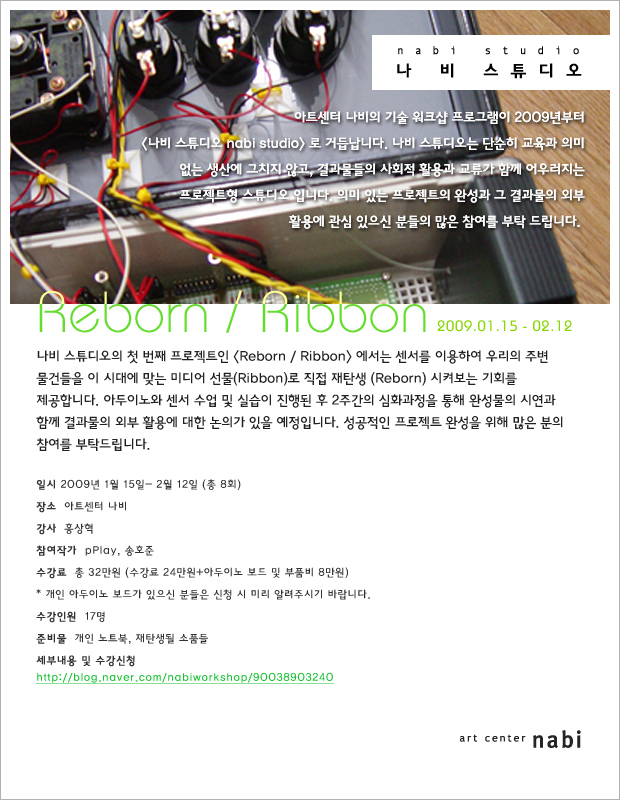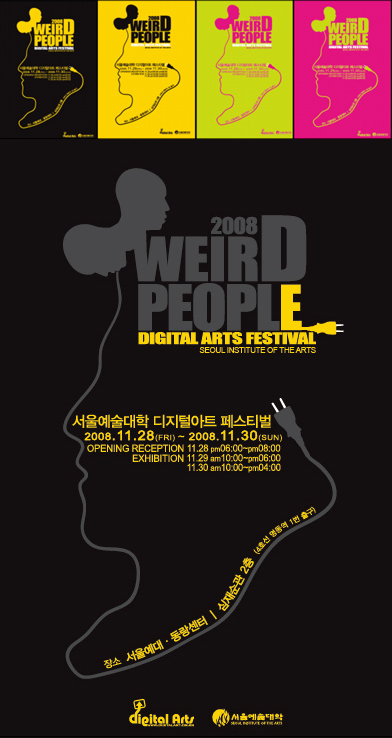'분류 전체보기'에 해당되는 글 119건
- 2009.01.05 Arduino DataSheet
- 2009.01.04 Color Selector
- 2009.01.04 마이크로 소프트웨어에 소개된 Arduino
- 2009.01.04 led 저항계산법
- 2008.12.29 나비 스튜디오 2009 - ‘Reborn / Ribbon’ project
- 2008.12.27 Processing 1.0.1
- 2008.12.22 V.A2008 :: Visual Artistry 2008-The Visual Inspiration Party
- 2008.12.16 나비 스튜디오 2009 - ‘Reborn / Ribbon’ project
- 2008.12.09 드디어 오셨다 akai MPK 49
- 2008.11.26 2008학년도 디지털아트학부 디지털아트페스티벌
- Summary datasheet pdf, 33 pages.
- Complete datasheet pdf, 374 pages.
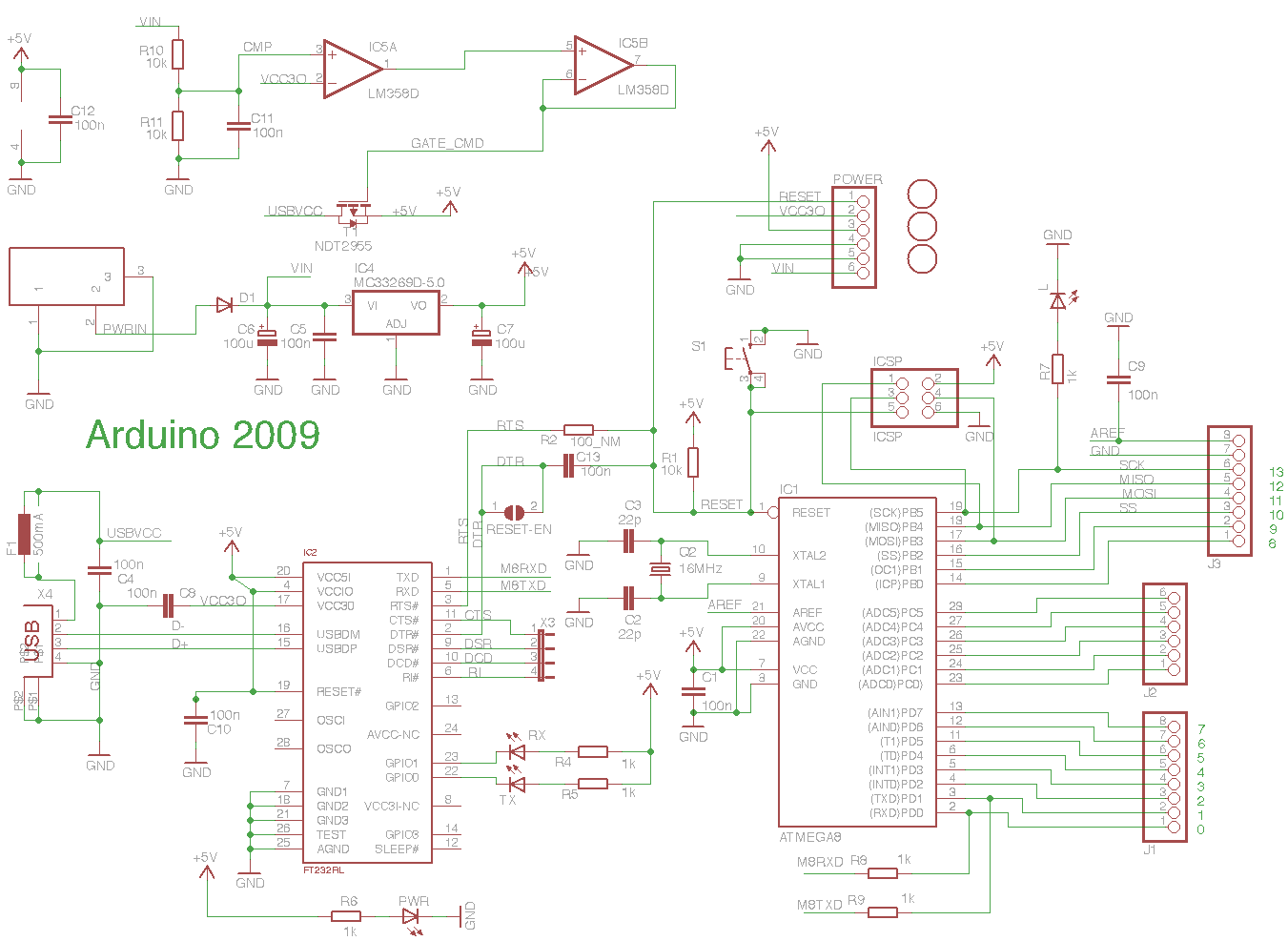
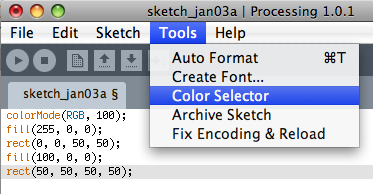
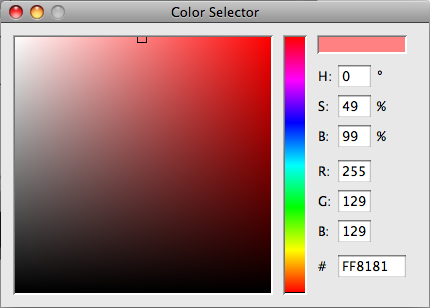
R(저항) = V(인가전압-LED정격전압) / If(LED의 소비전류) 입니다.
입력 5V 에 LED는 3.3V 20mA 라면 (5 - 3.3) / 0.02 = 85옴
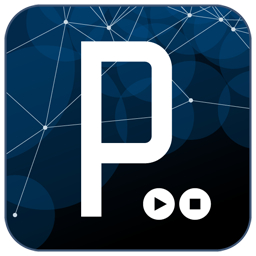
I just returned from “Oxfort Project: Part II” and am pleased to share this announcement:
Today, on November 24, 2008, we launch the 1.0 version of the Processing software. Processing is a programming language, development environment, and online community that since 2001 has promoted software literacy within the visual arts. Initially created to serve as a software sketchbook and to teach fundamentals of computer programming within a visual context, Processing quickly developed into a tool for creating finished professional work as well.
Processing is a free, open source alternative to proprietary software tools with expensive licenses, making it accessible to schools and individual students. Its open source status encourages the community participation and collaboration that is vital to Processing’s growth. Contributors share programs, contribute code, answer questions in the discussion forum, and build libraries to extend the possibilities of the software. The Processing community has written over seventy libraries to facilitate computer vision, data visualization, music, networking, and electronics.
Students at hundreds of schools around the world use Processing for classes ranging from middle school math education to undergraduate programming courses to graduate fine arts studios.
+ At New York University’s graduate ITP program, Processing is taught alongside its sister project Arduino and PHP as part of the foundation course for 100 incoming students each year.
+ At UCLA, undergraduates in the Design | Media Arts program use Processing to learn the concepts and skills needed to imagine the next generation of web sites and video games.
+ At Lincoln Public Schools in Nebraska and the Phoenix Country Day School in Arizona, middle school teachers are experimenting with Processing to supplement traditional algebra and geometry classes.
Tens of thousands of companies, artists, designers, architects, and researchers use Processing to create an incredibly diverse range of projects.
+ Design firms such as Motion Theory provide motion graphics created with Processing for the TV commercials of companies like Nike, Budweiser, and Hewlett-Packard.
+ Bands such as R.E.M., Radiohead, and Modest Mouse have featured animation created with Processing in their music videos.
+ Publications such as the journal Nature, the New York Times, Seed, and Communications of the ACM have commissioned information graphics created with Processing.
+ The artist group HeHe used Processing to produce their award-winning Nuage Vert installation, a large-scale public visualization of pollution levels in Helsinki.
+ The University of Washington’s Applied Physics Lab used Processing to create a visualization of a coastal marine ecosystem as a part of the NSF RISE project.
+ The Armstrong Institute for Interactive Media Studies at Miami University uses Processing to build visualization tools and analyze text for digital humanities research.
The Processing software runs on the Mac, Windows, and GNU/Linux platforms. With the click of a button, it exports applets for the Web or standalone applications for Mac, Windows, and GNU/Linux. Graphics from Processing programs may also be exported as PDF, DXF, or TIFF files and many other file formats. Future Processing releases will focus on faster 3D graphics, better video playback and capture, and enhancing the development environment. Some experimental versions of Processing have been adapted to other languages such as JavaScript, ActionScript, Ruby, Python, and Scala; other adaptations bring Processing to platforms like the OpenMoko, iPhone, and OLPC XO-1.
Processing was founded by Ben Fry and Casey Reas in 2001 while both were John Maeda’s students at the MIT Media Lab. Further development has taken place at the Interaction Design Institute Ivrea, Carnegie Mellon University, and the UCLA, where Reas is chair of the Department of Design | Media Arts. Miami University, Oblong Industries, and the Rockefeller Foundation have generously contributed funding to the project.
The Cooper-Hewitt National Design Museum (a Smithsonian Institution) included Processing in its National Design Triennial. Works created with Processing were featured prominently in the Design and the Elastic Mind show at the Museum of Modern Art. Numerous design magazines, including Print, Eye, and Creativity, have highlighted the software.
For their work on Processing, Fry and Reas received the 2008 Muriel Cooper Prize from the Design Management Institute. The Processing community was awarded the 2005 Prix Ars Electronica Golden Nica award and the 2005 Interactive Design Prize from the Tokyo Type Director’s Club.
The Processing website (www.processing.org) includes tutorials, exhibitions, interviews, a complete reference, and hundreds of software examples. The Discourse forum hosts continuous community discussions and dialog with the developers.
Download images and more text about Processing:
www.processing.org/about/processing-1.0.zip
Questions and Answers:
What is new in Processing 1.0?
The most important aspect of this release is its stability. However, we have added many new features during the last few months. They include a new optimized 2D graphics engine, better integration for working with vector files, and the ability to write tools to enhance the development environment.
Who uses Processing?
Processing is used by a very diverse group of people, from children first exploring computer programming to professional artists, designers, architects, engineers, and scientists. Processing has a shallow learning curve to make writing code easier for beginners, but it also allows more experienced programmers to write sophisticated software. We’ve seen the number of people using Processing double each year for the last three years. The increased stability of the software and the publication of six related books in the last two years are the likely reasons for this increase.
What is the future of Processing?
The 1.0 version of Processing focuses on education and software sketching (prototyping). The next major release of the software will focus on professional users while retaining the simplicity that is Processing’s trademark. Specifically, future releases will increase the speed of programs that work with video and complex 3D graphics.
Books about Processing:
Fry, Ben. Visualizing Data: Exploring and Explaining Data with the Processing Environment. Sebastopol, CA: O’Reilly Media, 2008.
Greenberg, Ira. Processing: A Programming Handbook for Visual Designers and Artists. Berkeley, CA: Friends of Ed, an Apress Co, 2007.
Igoe, Tom. Making Things Talk: Practical Methods for Connecting Physical Objects. Make: projects. Sebastopol, CA: O’Reilly, 2007.
Reas, Casey, and Ben Fry. Processing: A Programming Handbook for Visual Designers and Artists Cambridge, Mass: MIT Press, 2007.
Shiffman, Daniel. Learning Processing: A Beginner’s Guide to Programming Images, Animation, and Interaction. The Morgan Kaufmann Series in Computer Graphics. Burlington, MA: Morgan Kaufmann/Elsevier, 2008.
나비 스튜디오
미디어는 사람들이 아이디어를 표현하고 발전시키는데 사용하는 다양한 매체적 수단이다.
나비 스튜디오는 과학기술과 예술이 융합되는 새로운 미디어 환경에서 다양한 미디어 테크놀로지를 직접 사용하여 미디어 아트에 적용할 수 있는 프로젝트 형 스튜디오이다.
새로운 문화의 생산과 수용이 이루어지고 있는 지금, 그것에 대한 다양한 경험과 공유 그리고 그 활용을 목적으로 하며, 정해진 목적과 주제를 통해 얻어진 결과물들을 다른 프로젝트나 외부적 유통으로 이어나가기도 한다.
"Reborn / Ribbon" project
한 아이가 아빠로부터 강아지 모양 스탬프를 선물 받는다
아이는 신이 나서 종이와 그림에 강아지스탬프를 찍으며 카드를 만든다
한 아이가 아빠로부터 강아지 모양 스탬프를 선물 받는다
아이가 만드는 카드에 스탬프를 찍을 때마다 강아지 눈에 반짝반짝 불이 들어오며 반갑게 인사를 한다.
'멍멍~'
리본 프로젝트는 이 시대에 맞는 미디어 선물(Ribbon)을 직접 재탄생(Reborn) 해 보는 기회이다. 미디어 표현도구들 중 가장 많이 쓰이는 센서를 이용해서 재탄생의 주제와 활용의 목적에 맞게 구성하고 창의적으로 조작해 봄으로서, 우리의 일상과 주변을 어떻게 재해석 해볼 수 있을지 그 가능성을 탐구해 본다.
일시
2009년 1월 15일 (목) ~
1/15 목요일 오후 7~10시 ---> 수업 & 실습 1
1/19 월요일 오후 7~10시 ---> 수업 & 실습 2
1/22 목요일 오후 7~10시 ---> 수업 & 실습 3
1/29 목요일 오후 7~10시 ---> 수업 & 실습 4
---------------------------------------------------------------------------------------
2/02 월요일 오후 3~6시 ---> 심화작업 (조교/참여작가1)
2/04 수요일 오후 3~6시 ---> 심화작업 (강사/조교)
2/09 월요일 오후 3~6시 ---> 심화작업 (조교/참여작가2)
2/12 목요일 오후 7~10시 ---> 결과물 발표 & 시연 & 활용 논의 (강사/조교)
장소
아트센터 나비 원형극장
(종로구 서린동 99번지 SK서린빌딩 4층 아트센터 나비)
수강료
32만원 (수강료24만원 + 아두이노보드/부품비8만원)
* 만약, 개인 아두이노 보드가 있으신 분은 신청하실 때 반드시 미리 문의 해 주시기 바랍니다.
(Arduino Duemilanove / Arduino Diecimila 버전만 가능)
수강인원 : 총 17명
※ 나비 스튜디오는 워크샵 기간 중에 반드시 결과물을 이끌어 내어 그 작품의 외부 활용까지 함께 하실 분을 모집합니다.
나비 스튜디오는 단순히 교육으로만 끝나는 수업이 아닌 <교육 + 결과물의 사회적활용 + 교류>가 함께 어우러지는 '프로젝트형 스튜디오' 입니다. 결과물의 완성도에 따라 여러분의 작품이 외부 전시 혹은 아트센터 나비 내부 프로젝트로 연계되어 참여 및 공개될 수도 있습니다.
스튜디오에서 목표한 결과물의 완성과 그것을 외부적인 활용으로까지 연결하는 것에 함께 하실 분들의 많은 관심과 참여를 부탁드립니다.
이 프로젝트를 위해 아래와 같은 프로그래밍이나 하드웨어에 대한 기초적인 이해나 경험이 있으신 분을 우대합니다.
(다음 중 한가지 이상 해당 자)
* 프로그래밍 언어(C/C++)의 기초 지식이 있으신 분
* 전자회로 및 Analog Sensor에 기초지식이나 경험이 있으신 분
* 미디어 디자인 기초 배경이 있으신 분
* 하드웨어나 미디어 실기 워크샵 참여 경험이 있으신 분
준비물- 개인 랩탑 (윈도우 사양 상관없음)
- 각자 재해석/재탄생 시킬 주변의 물건들 (두번째 시간부터 준비)
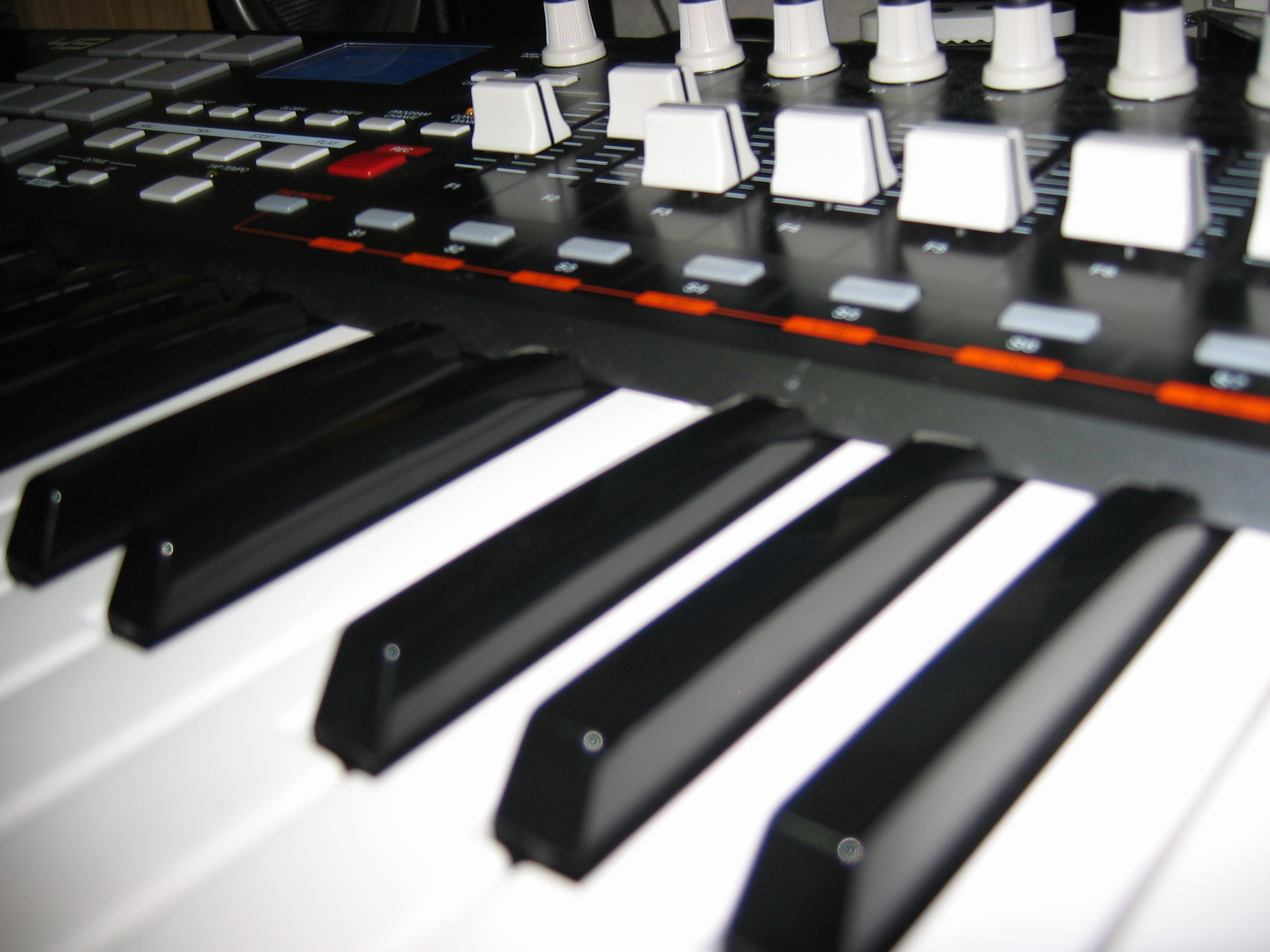
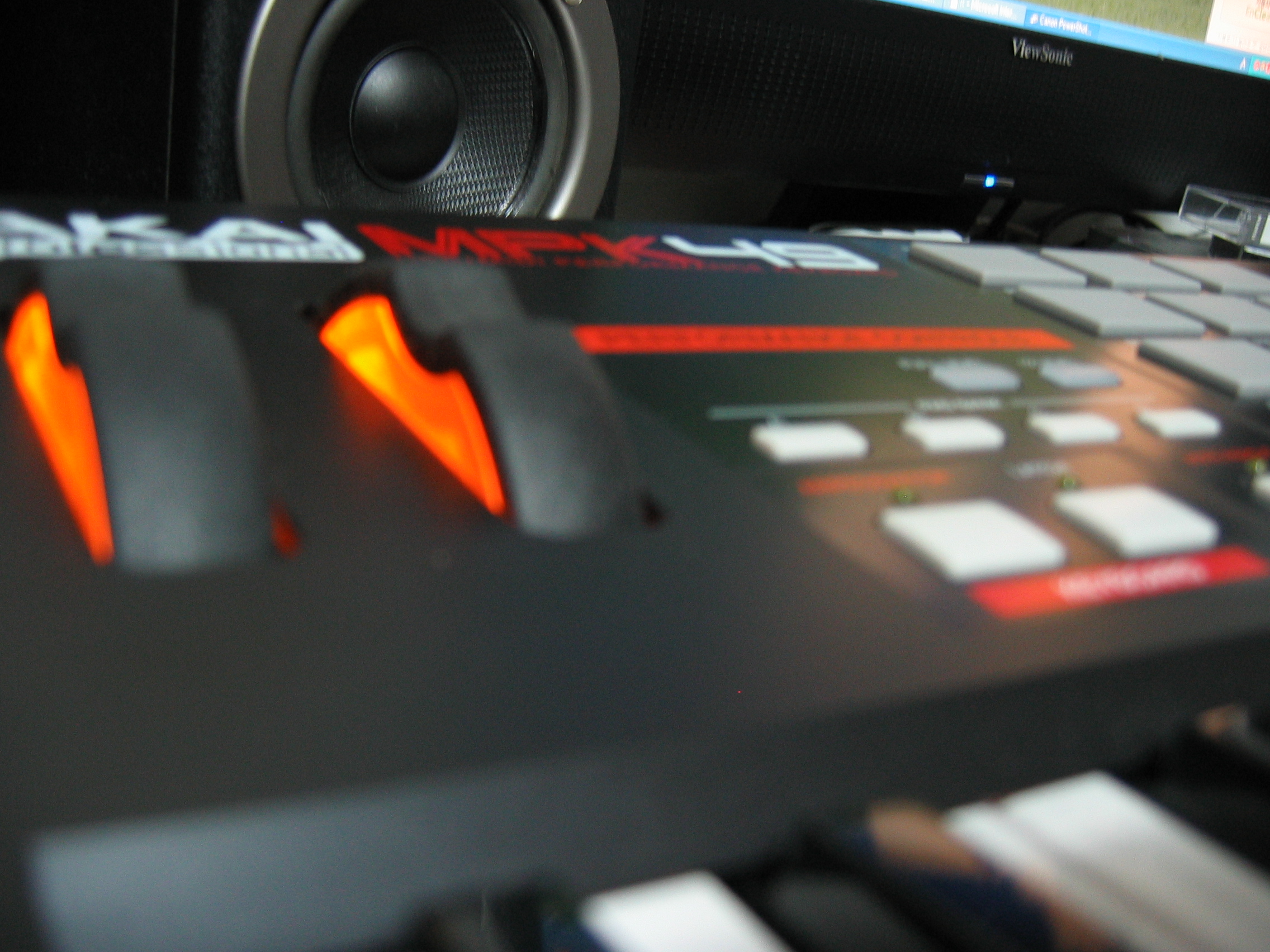
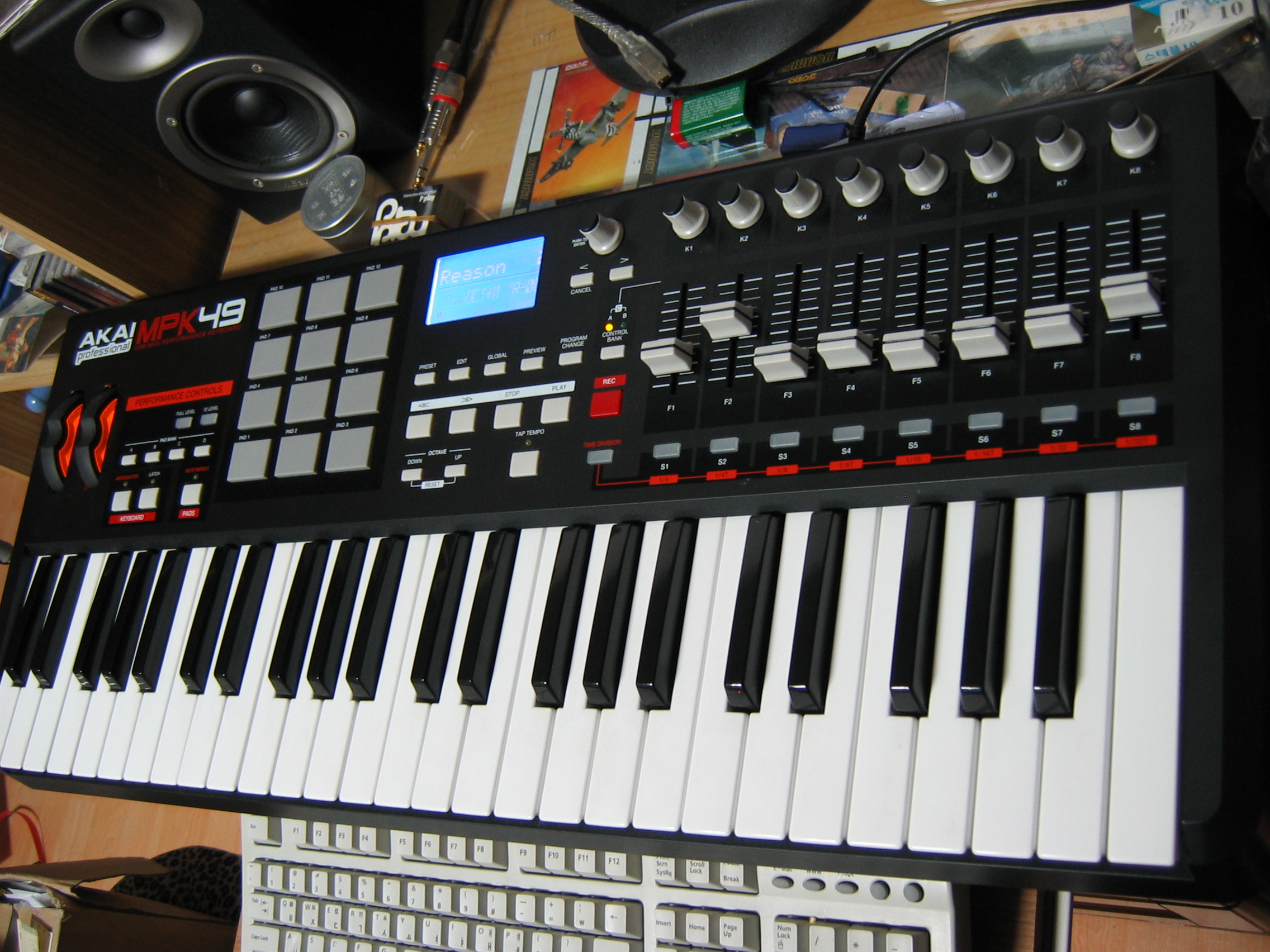
그토록 갖고 싶었던 akai mpk 49를 건져왔다.. 기나긴 장터의 매복속에..ㅎㅎ
아 기쁘다.ㅋㅋ

